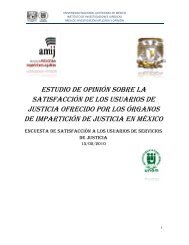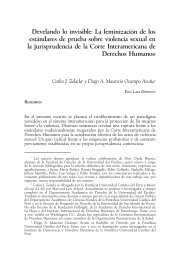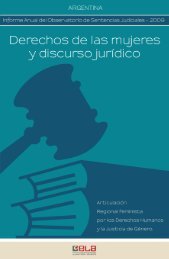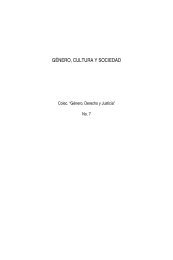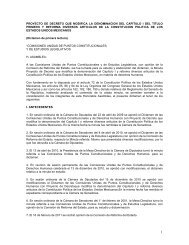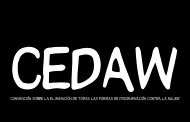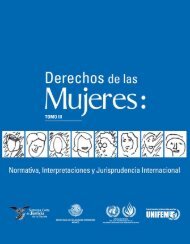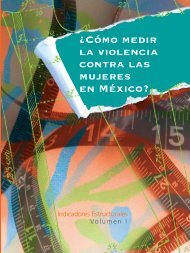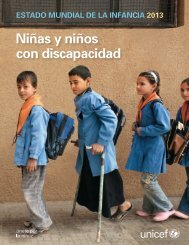116. The British cameraman, Simon Cox, took photographs of bodies in many churchesin Remera, Biambi, Shangi, between Cyangugu and Kibuye, and in Bisesero. Hementioned identity cards strewn on the ground, all of which were marked "Tutsi".Consequently, in view of these widespread killings the victims of which were mainlyTutsi, the Chamber is of the opinion that the first requirement <strong>for</strong> there to be genocide hasbeen met, the killing and causing serious bodily harm to members of a group.117. The second requirement is that these killings and serious bodily harm, as is the casein this instance, be committed with the intent to destroy, in whole or in part, a particulargroup targeted as such.118. In the opinion of the Chamber, there is no doubt that considering their undeniablescale, their systematic nature and their atrociousness, the massacres were aimed atexterminating the group that was targeted. Many facts show that the intention of theperpetrators of these killings was to cause the complete disappearance of the Tutsi. In thisconnection, Alison Des<strong>for</strong>ges, an expert witness, in her testimony be<strong>for</strong>e this Chamber on25 February 1997, stated as follows: "on the basis of the statements made by certainpolitical leaders, on the basis of songs and slogans popular among the Interahamwe, Ibelieve that these people had the intention of completely wiping out the Tutsi from<strong>Rwanda</strong> so that-as they said on certain occasions - their children , later on , would notknow what a Tutsi looked like, unless they referred to history books". Moreover, thistestimony given by Dr. Des<strong>for</strong>ges was confirmed by two prosecution witnesses, witnessKK and witness OO, who testified separately be<strong>for</strong>e the <strong>Tribunal</strong> that one SilasKubwimana had said during a public meeting chaired by the accused himself that all theTutsi had to be killed so that someday Hutu children would not know what a Tutsi lookedlike.119. Furthermore, as mentioned above, Dr. Zachariah also testified that the Achilles'tendons of many wounded persons were cut to prevent them from fleeing. In the opinionof the Chamber, this demonstrates the resolve of the perpetrators of these massacres notto spare any Tutsi. Their plan called <strong>for</strong> doing whatever was possible to prevent any Tutsifrom escaping and, thus, to destroy the whole group. Witness OO further told theChamber that during the same meeting, a certain Ruvugama, who was then a Member ofParliament, had stated that he would rest only when no single Tutsi is left in <strong>Rwanda</strong>".120. Dr. Alison Des<strong>for</strong>ges testified that many Tutsi bodies were often systematicallythrown into the Nyabarongo river, a tributary of the Nile. Indeed, this has beencorroborated by several images shown to the Chamber throughout the trial. She explainedthat the underlying intention of this act was to "send the Tutsi back to their place o<strong>for</strong>igin", to "make them return to Abyssinia", in keeping with the allegation that the Tutsiare <strong>for</strong>eigners in <strong>Rwanda</strong>, where they are supposed to have settled following their arrivalfrom the Nilotic regions.54121. Other testimonies heard, especially that of Major-General Dallaire, also show thatthere was an intention to wipe out the Tutsi group in its entirety, since even newbornbabies were not spared. Even pregnant women, including those of Hutu origin, were
killed on the grounds that the foetuses in their wombs were fathered by Tutsi men, <strong>for</strong> ina patrilineal society like <strong>Rwanda</strong>, the child belongs to the father's group of origin. In thisregard, it is worthwhile noting the testimony of witness PP, heard by the Chamber on 11April 1997, who mentioned a statement made publicly by the accused to the effect that ifa Hutu woman were impregnated by a Tutsi man, the Hutu woman had to be found inorder "<strong>for</strong> the pregnancy to be aborted". According to prosecution witnesses KK, PP andOO, the accused expressed this opinion on other occasions in the <strong>for</strong>m of a Rwandeseproverb according to which if a snake wraps itself round a calabash, there is nothing thatcan be done, except to break the calabash' (" Iyo inzoka yiziritse ku gisabo, nta kundibigenda barakimena)55. In the context of the period in question, this proverb meant thatif a Hutu woman married to a Tutsi man was impregnated by him, the foetus had to bedestroyed so that the Tutsi child which it would become should not survive. It should benoted in this regard that in Rwandese culture, breaking the "gisabo", which is a bigcalabash used as a churn was considered taboo. Yet, if a snake wraps itself round agisabo, obviously, one has no choice but to ignore this taboo in order to kill the snake.122. In light of the <strong>for</strong>egoing, it is now appropriate <strong>for</strong> the Chamber to consider the issueof specific intent that is required <strong>for</strong> genocide (mens rea or dolus specialis). In otherwords, it should be established that the above-mentioned acts were targeted at a particulargroup as such. In this respect also, many consistent and reliable testimonies , especiallythose of Major-General Dallaire, Dr. Zachariah, victim V, prosecution witness PP,defence witness DAAX, and particularly that of the accused himself unanimously agreeon the fact that it was the Tutsi as members of an ethnic group which they <strong>for</strong>med in thecontext of the period56 in question, who were targeted during the massacres57.123. Two facts, in particular, which suggest that it was indeed the Tutsi who weretargeted should be highlighted: Firstly, at the roadblocks which were erected in Kigaliimmediately after the crash of the President's plane on 6 April 1994 and, later on, in mostof the country's localities, members of the Tutsi population were sorted out. Indeed, atthese roadblocks which were manned, depending on the situation, either by soldiers,troops of the Presidential Guard and/or militiamen, the systematic checking of identitycards indicating the ethnic group of their holders, allowed the separation of Hutu fromTutsi, with the latter being immediately apprehended and killed, sometimes on the spot.Secondly, the propaganda campaign conducted be<strong>for</strong>e and during the tragedy by theaudiovisual media, <strong>for</strong> example, "Radio Television des Milles Collines"(RTLM), or theprint media, like the Kangura58 newspaper. These various news media overtly called <strong>for</strong>the killing of Tutsi, who were considered as the accomplices of the RPF and accused ofplotting to take over the power lost during the revolution of 1959. Some articles andcartoons carried in the Kangura newspaper, entered in evidence, are unambiguous in thisrespect. In fact, even exhibit 25A could be added to this lot. Exhibit 25A is a letter fromthe "GZ" staff headquarters dated 21 September 1992 and signed by DeofratasNsabimana, Colonel, BEM, to which is annexed a document prepared by a committee often officers and which deals with the definition of the term enemy. According to thatdocument, which was intended <strong>for</strong> the widest possible dissemination, the enemy fell intotwo categories, namely:" the primary enemy" and the "enemy supporter". The primaryenemy was defined as "the extremist Tutsi within the country or abroad who are nostalgic
- Page 2 and 3: 1.2. The Indictment1.3. Jurisdictio
- Page 4 and 5: eports2 which indicated that acts o
- Page 6 and 7: 3. Jean Paul AKAYESU, born in 1953
- Page 8 and 9: 16. Jean Paul AKAYESU, on or about
- Page 10 and 11: Counts 7-8(Crimes Against Humanity)
- Page 12 and 13: c) Deliberately inflicting on the g
- Page 14 and 15: 1.4. The Trial1.4.1. Procedural Bac
- Page 16 and 17: y the opening statement for the Def
- Page 18 and 19: y the Tribunal for crimes related t
- Page 20 and 21: 38. Regarding the Gishyeshye meetin
- Page 22 and 23: witness was lying because he or she
- Page 24 and 25: in the commune. His de facto author
- Page 26 and 27: 70. Apart from asking the prefect t
- Page 28 and 29: 84. According to the testimony of D
- Page 30: Scores of political leaders were im
- Page 33 and 34: his listeners to avoid the error of
- Page 35: 111. The killing of Tutsi which hen
- Page 39 and 40: 128. In conclusion, it should be st
- Page 41 and 42: Witness statements137. During the t
- Page 43 and 44: protection of witnesses issued by t
- Page 45 and 46: covered anyone who had anti-Tutsi t
- Page 47 and 48: Tutsi and the Tutsi were accused of
- Page 49 and 50: as "two armies", "two belligerents"
- Page 51 and 52: "The primary criterion for [definin
- Page 53 and 54: 180. Many witnesses testified regar
- Page 55 and 56: stated in that Decision, it did not
- Page 57 and 58: deeds. For these reasons, the Chamb
- Page 59 and 60: Concerning the allegation that at l
- Page 61 and 62: turned over alive to Akayesu, and t
- Page 63 and 64: younger brothers. He stated that he
- Page 65 and 66: 237. Karangwa testified under cross
- Page 67 and 68: three brothers lie on their stomach
- Page 69 and 70: known as Usuri (phonetic spelling)
- Page 71 and 72: Karangwa's explanation for the inco
- Page 73 and 74: Count 3, Crimes against Humanity (e
- Page 75 and 76: those killed were professors from R
- Page 77 and 78: 290. Witness DCC for the Defence, d
- Page 79 and 80: children, and old people. The Chamb
- Page 81 and 82: further that he had not heard of Ak
- Page 83 and 84: to fetch the one who remains', a pr
- Page 85 and 86: sector councillors called on the cr
- Page 87 and 88:
According to witness A, the bourgme
- Page 89 and 90:
present took it to mean that the Tu
- Page 91 and 92:
355. The Accused himself confirmed
- Page 93 and 94:
364. Paragraph 15 of the Indictment
- Page 95 and 96:
The witness said a certain Françoi
- Page 97 and 98:
has not been proved beyond reasonab
- Page 99 and 100:
who had come to his house. He said
- Page 101 and 102:
Interahamwe at the entrance, carryi
- Page 103 and 104:
ack to the bureau communal and on t
- Page 105 and 106:
Victim Y (Witness N), a [68] year o
- Page 107 and 108:
which were at times committed by mo
- Page 109 and 110:
communal into a forest in the area
- Page 111 and 112:
clubbing a young teacher who had be
- Page 113 and 114:
434. Two days after arriving at the
- Page 115 and 116:
he went into hiding during the mass
- Page 117 and 118:
ureau communal, but he insisted tha
- Page 119 and 120:
taken away from the bureau communal
- Page 121 and 122:
The Accused himself testified that
- Page 123 and 124:
464. In that case, when the matter
- Page 125 and 126:
"A person who planned, instigated,
- Page 127 and 128:
involve facilitating the commission
- Page 129 and 130:
493. In accordance with the said pr
- Page 131 and 132:
Deliberately inflicting on the grou
- Page 133 and 134:
y a psychological relationship betw
- Page 135 and 136:
Chamber notes that, as stated above
- Page 137 and 138:
• complicity by procuring means,
- Page 139 and 140:
547. Consequently, where a person i
- Page 141 and 142:
underscoring their commitment to se
- Page 143 and 144:
character134. In fact, the concept
- Page 145 and 146:
575. The definition of crimes again
- Page 147 and 148:
grounds mentioned in Article 3 of t
- Page 149 and 150:
accepted definition of this term in
- Page 151 and 152:
adopted primarily to protect the vi
- Page 153 and 154:
610. Whilst the Chamber is very muc
- Page 155 and 156:
description, namely, what constitut
- Page 157 and 158:
forces to plan and carry out concer
- Page 159 and 160:
635. There is no clear provision on
- Page 161 and 162:
7.2. Count 5 - Crimes against human
- Page 163 and 164:
663. The definition of crimes again
- Page 165 and 166:
677. The Tribunal notes that eviden
- Page 167 and 168:
685. In the light of its factual fi
- Page 169 and 170:
692. The Tribunal finds, under Arti
- Page 171 and 172:
determine, as far as each proven fa
- Page 173 and 174:
the Tutsi in general. Akayesu who h
- Page 175 and 176:
722. As regards the allegations in
- Page 177 and 178:
732. The rape of Tutsi women was sy
- Page 179 and 180:
Chamber finds beyond a reasonable d
- Page 181 and 182:
Footnote 11. Decision: Order for Co
- Page 183 and 184:
Footnote 41. Article 104 of the Loi
- Page 185 and 186:
Footnote 68. Dictionnaire Rwandais-
- Page 187 and 188:
Footnote 103. "Principles of Intern
- Page 189 and 190:
Footnote 134. Secretary General's R
- Page 191:
Footnote 171. See General Legal Fin



